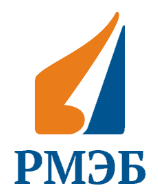EXPERIMENTAL STUDIES OF THE VORTEX HYDRAULIC ELEVATOR.
Keywords:
hydraulic elevator, pump, hydraulic mixture, ejection, working nozzle, active stream, passive streamAbstract
The article presents the results of experimental studies to assess the optimal operation modes of the vortex hydraulic elevator of the autonomous water treatment system. Based on experimental studies, it has been shown that twisting of the working and suction flows significantly increases the ejection capacity of vortex hydraulic elevators. The analysis of the results obtained (the curves of the dependence of the ejection coefficient on the spin parameters) allows us to conclude that there are optimal critical values for the vortex hydraulic elevator and hydraulic elevator with a tangential intake of the intake medium at which the highest value of the ejection coefficient is reached. It was also revealed that the swirling active and passive flows radically affect the mechanism for drawing the intake fluid into the mixing chamber of the hydraulic elevator. An increase in the swirling intensity increases the mixing of the flow, and large pressure gradients occur not only in the axial but also in the radial direction, which leads to an increase in the ejection coefficient. Thus, on the basis of the conducted experimental studies and preliminary technical and economic calculations, it can be concluded that the use of vortex hydraulic elevators for hydro transportation of various mixtures will significantly reduce energy consumption and increase the efficiency of their application.
References
"1 Lyamaev B.F. Hydrojet pumps and installations. Moscow, 1988, 277 p. [in Russian]
Gupta A., Lilly D., Seared N. Swirling flows. Moscow, Mir, 1987, 589 p. [in Russian]
Sokolov E.Ya., Zinger N.M. Inkjet machines. Moscow, Energy, 1970, 288 p. [in Russian]
Abduramanov A.A., Abirov A.A., Abduramanov E.A. Jet pumps. Hydrocyclone pumping units. Pumping stations (Analytical review). Taraz, 2003, 32 p.
Lesin A.V., Valeev S.I., Bulkin V.A. Prospects for the development of the separation of suspensions and emulsions in hydrocyclones. Bulletin of the Technological University. 2015, Vol. 18, No.10, pp. 55 – 57.
Basharov M.M., Sergeeva O.A. Devices and calculation of hydrocyclones. Kazan, 2012, 92 p.
Matvienko OV, Evtyushkin E.V. Theoretical study of the cleaning process of oil-contaminated soil in hydrocyclone devices. Engineering Physics Journal. 2007, Vol. 80, No.3, pp.72 – 80.
Evtyushkin E.V. Mathematical modeling of the movement of the dispersed phase and separation in a hydrocyclone. Thesis of the Ph.D. , Tomsk, 2007, 168 p.
"













